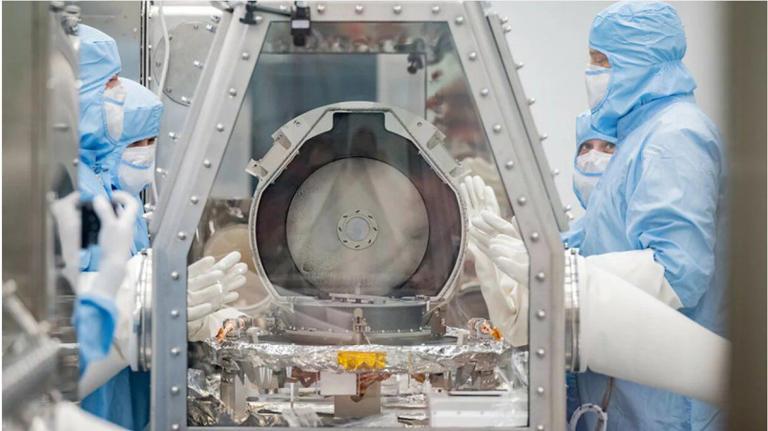The OSIRIS-REx mission, an eight-year project that consumed resources of more than $1 billion, culminated in the return of a sample tray filled with dark black rocks from the asteroid Bennu. At first glance, these specimens may appear common, resembling the type of rocks one might find on a trail. However, this appearance hides the deep scientific importance of the substance.
Bennu, classified as a B-type asteroid, is thought to be composed of material that existed at the dawn of our solar system more than 4.5 billion years ago. These materials include organic compounds, which, despite their name, do not indicate life, but rather are complex molecules of carbon, hydrogen (CH), and water. This mixture of materials is known as “carbonaceous chondrites.”
Although similar materials have been found on Earth in the form of meteorites, such as the famous Allende meteorite from Mexico, these terrestrial examples have undergone transformations in their journey through our atmosphere and their time on Earth's surface. This change, although subtle, distinguishes them from the primordial, untouched material that makes up Bennu. This distinction underscores the unique value of the samples returned by OSIRIS-REx, which provide a more direct link to the initial conditions of our solar system.
Mosaic image of asteroid Bennu. (Credit: OCAMS/NASA)
The mission to Bennu involved a complex process to reach the asteroid, land a sampler on its surface, and then return the collected material to Earth. The sample's return journey to Earth was carefully managed to maintain its safety, culminating in its arrival in Utah. The container containing the sample was sealed so effectively that NASA had to develop new tools to open it, reflecting the challenges of the mission and the care taken to maintain the purity of the sample.
Upon examination, the material from Bennu appeared as a dark, soot-like substance, and is thought to have been in the vacuum of space for about 4.5 billion years. The size and shape of the asteroid, which is described as being diamond-like and half a kilometer long, along with its unexpectedly debris-filled surface, pose additional challenges to the mission. This surface formation, which resembles a clump of rocks, was not unique to Bennu, as a similar texture was observed on Ryugu, another asteroid sampled by the Japanese space agency.
The importance of the OSIRIS-REx mission goes beyond simply obtaining asteroid materials. The return of these samples to Earth allows a level of analysis and scientific research that would not be possible if performed remotely on an asteroid. The limitations of space instruments, in terms of thinness, weight and complexity, require that samples be physically returned for detailed analysis.
This mission represents the second instance, and the first for the United States, of returning asteroid material to our planet. Analyzes of these samples will provide insight into their precise age, chemical and isotopic compositions, and mineralogical properties. In addition, the research will focus on organic compounds that have remained unchanged since the formation of the solar system. These components, along with the detected water content, are essential to understanding the conditions that could lead to the emergence of life.
The material recovered from Bennu, although just a collection of black rocks, represents a tangible link to the early solar system. Studying these samples has the potential to reveal information about the primordial conditions that gave rise to our planet, and thus life as we know it. Therefore, the OSIRIS-REx mission provides an important bridge to our cosmic origins, providing insights that can only be obtained through direct examination of unchanged materials due to processes that affect the materials once they reach Earth's surface.
source: Discover Magazine

“Friendly zombie fanatic. Analyst. Coffee buff. Professional music specialist. Communicator.”

